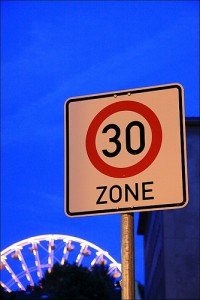Podcast: Play in new window | Download
Subscribe: Apple Podcasts | RSS
 What is it like for an engineer to be “in the zone?” Are there any good techniques for finding such a “flow” in your engineering work? We discuss these issues in this week’s episode.
What is it like for an engineer to be “in the zone?” Are there any good techniques for finding such a “flow” in your engineering work? We discuss these issues in this week’s episode.
- Chris likes the performance of leaded solder, but recognizes the importance of moving to a lead-free alternative. This transition in solder composition was largely driven by the Restriction of Hazardous Substances Directive (or RoHS).
- The problem of tin whiskers has the aerospace industry continuing to use leaded solder.
- Chris has slipped “into the zone” while soldering, and Jeff has similarly found the “flow” while working on CAD drawings.
- Time seems to fly by when one is in the zone, and the process can be both physically and mentally exhausting.
- Psychologist Mihály Csíkszentmihályi has theorized that moments of flow occur when we activate so many neurological functions that we can no longer maintain awareness of our own activities. Thus, we lose any sense of self, and become wholly engrossed in the moment.
- A blog entry about creative flow, written by Everett Bogue, was recently published on the site Zen Habits. It is noted that achieving flow can be difficult.
- Suggested steps for achieving flow are:
- Pick a enjoyable, challenging activity
- Eliminate distractions
- Think before you do
- Isolate yourself
- Let go
- Give yourself a time limit
- Keep moving
- Don’t think
- Practice
- Gamification uses game design techniques to enhance non-game contexts.
- In a recent YouTube clip, Slovenian philosopher Slavoj Žižek claims that happiness is rarely a driving desire in creative endeavors.
- The topic of what inspires people to take action is covered in Daniel Pink’s book, Drive: The Surprising Truth About What Motivates Us.
- We learn that Jeff will listen to (yawn) smooth jazz while working. Chris, on the other hand, can crank away while listening to techno music.
- Clips of white, pink, or brown noise can be found online at SimplyNoise.com. These are useful for drowning out unwanted background noise in the work environment.
- John Cook claims that Mental Context Switches are Evil. It’s tough to stay in the zone if you’re constantly having to think about the tools you are using, and the context in which they work.
- Both Chris and Jeff have experimented with the Pomodoro technique, in which tasks are broken into 20 minute work sessions. Numerous apps are available for tracking tasks and interruptions, if you don’t like using pencil and paper.
- Cubicles were created for office equipment manufacturer Herman Miller by designer Robert Propst.
- Jeff’s additional suggestions for getting into the zone include:
- Start with a clean desk
- Use sketches to capture relationships
- Leave a foothold for the next day
- Take a power nap when struggling
- Some companies provide napping rooms for employees to refresh themselves mid-day.
- Today’s engineers have to maintain a creative edge, as routine functions and duties can be computerized or outsourced.
Thanks again to Ian for being on The Engineering Commons this week. To catch each update as soon as it’s posted, be sure to subscribe to the feed!
Thanks to loop_oh for the speed zone photo, titled “30 zone.”
So when Jeff is out on the practice range hitting golf balls for 4 hours until he has blisters and all of his friends are inside playing cards and drinking beer all I have to do is go say Pomodoro? I didn’t realize it would be so easy!
Interesting podcast to listen to as I run.